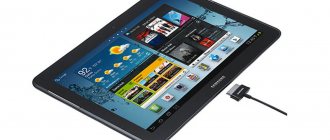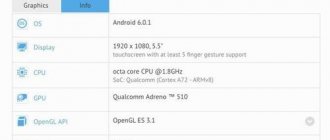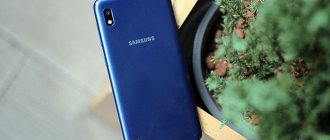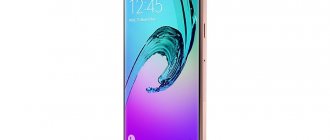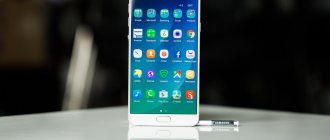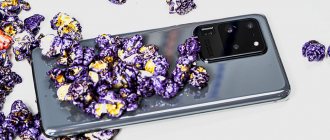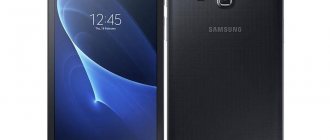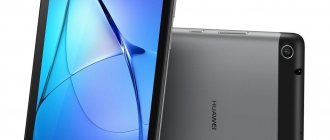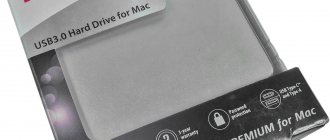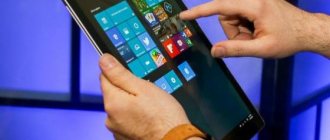Equipment
The following was found in the Samsung Galaxy S7 kit:
- charger with Fast Adaptive Charge function
- Micro USB cable
- wired headset (in my case there was none)
- SIM eject tool
- USB to Micro interface adapter
The latter is designed to copy data from an old smartphone to a new one. There was even a corresponding software function in the menu. The only thing I don’t understand is what kind of devices we are talking about: any Android smartphone or only “Samsung” solutions.
Immediately regarding the fact that Samsung decided not to equip its brainchild with USB Type-C, but limited itself to the version with Micro USB. From the point of view of the desire to get the very latest, this is, of course, a drawback. In practice, there is no real need for a new type of cable. Micro USB is like Nokia charging in its heyday. Type-C is something new, tempting and not clear why it is needed. Well, it's true!
Design
The first thing that catches your eye is the design, or rather, the lack of fundamental changes in it. The new product has been retouched in the spirit of the times, but the designers did not bring anything new to the appearance of the device.
Is this good or bad? I don't think you need to chase something new every year. This meaningless race, which is already too much in our lives. Updating the appearance every two years, as they do at Apple and now at Samsung, is a small island of stability that should be appreciated and not scolded. And our savings will be intact.
Samsung Galaxy S7 turned out to be chubby. It is thicker than its predecessor by as much as 1.1 mm.
It would seem that just one millimeter and a tenth is what all the fuss is about? In practice, this matters. I didn’t have the S6 on hand, however, even after many months, when I last held the Essence in my hands, I immediately determined that the new product was noticeably thicker.
| Length | Width | Thickness | Weight | |
| Samsung Galaxy S7 (5.1'') | 142,4 | 69,6 | 7,9 | 152 |
| Samsung Galaxy S6 (5.1'') | 143,4 | 70,5 | 6,8 | 138 |
| iPhone 6S (4.7'') | 138,3 | 67,1 | 7,1 | 143 |
| LG G5 (5.3'') | 149,4 | 73,9 | 7,7 | 159 |
Of course, this does not negatively affect the experience of using the device. Well, more by a millimeter. And what? Never mind! We use and enjoy the benefits of modern civilization, especially since the Galaxy S7, believe me, allows you to do this 100 percent.
However, if thickness is critical for you and you experience something similar to ecstasy when holding a thin smartphone in your hands (Fly Tornado Slim, for example), then the S7 will seem awkward to you. Another thing is that I have never met such aesthetes in my life, and I myself cannot classify myself in this category.
The developers sacrificed thickness in favor of installing a more capacious battery, as well as rounded protective glass. The intentions are good, so at this moment you can safely close your eyes.
Samsung broke down and installed a truly curved protective glass on the front panel. This is Corning Gorilla Glass 4, by the way.
I never tire of repeating that 2.5D glass comes in different forms. On the one hand, a similar panel was already in the Galaxy Note 4, but in comparison it is not at all the same. In S7 it has very steep edges, thanks to which the light plays very beautifully on the front surface of the device.
The same glass is installed on the back, but a little more easily soiled than we would like, and more curved. There is a good oleophobic coating, however, fingerprints and other traces of use will always accompany the device. Previously, many men only carried a shoe brush with them; now they will also have to carry microfiber to keep not only their shoes, but also their phone in proper condition. Times like these.
The protective glass in the Samsung Galaxy S7 is quite easily soiled
Personally, I like the use of glass on both the front and back instead of an all metal body. This is practical simply because you are less likely to drop the device. The same iPhone 6 or 6S tries to slip out of your hands. It seems that the creators made the case so “soapy” on purpose so that we would break the screens and replace them at our own considerable expense.
Fingers cling to the glass more reliably, so the safety for the handset is higher here.
And besides, glass provides the proper level of gloss. You certainly can’t refuse this new product. In my opinion, it shimmers with different colors so glamorously that it’s even too much. Perhaps a more matte shade would have looked much more impressive and discreet. However, this is a matter of personal preference.
All standard front elements are located above the screen. No additional flashes, second cameras and other nonsense pulled from the finger. However, when taking self-portraits in the dark, the display briefly turns up the brightness to illuminate the face. The technology is not new and we first became acquainted with it in the LG G3.
The ambient light sensor works strangely. More precisely, slowly and sharply.
The screen changes brightness level with a delay of about 3-4 seconds and one jump. There is no talk of any smoothness. Perhaps this is exactly the case that is associated with a non-final sample. I had exactly such a device.
There is evidence that over time, the device learns to determine the level of ambient light and display brightness depending on the user’s preferences. Unfortunately, I was not able to check this, since I did not test the device for much time.
The metal rim around the perimeter of the case is now completely rounded. Previously there were partially flat edges, but now they are not. No corners. At all! It is stated that the metal here (aluminum alloy 6013) is resistant to falls and is very durable.
The SIM card slot here has a composite design. The outer part that sticks out flush with the body is metal, and the inner part is plastic. The design, admittedly, is flimsy. I would like more reliability, although in principle it is not needed if you are not going to constantly change cards from one to another.
The multimedia speaker is located at the bottom and I didn’t like it.
Quite weak for a device of this level, both in volume and quality. The mids and highs go whistling, and you will definitely miss the volume on a noisy street. It costs nothing to miss a call.
But the vibration motor here works as it should. If the device is in your trouser pocket, then I don’t know what should distract you so much that you won’t feel the vibration. I rarely encounter such a strong vibration response. It’s great that in the settings you can adjust its intensity to suit your needs.
The rear camera still protrudes above the body, but now much smaller.
This fact even became an independent reason for pride on the part of the manufacturer. Check out the official image below.
Cool, I guess. The most interesting thing is that with the release of iPhone 7, the fact of a non-protruding camera will be actively exploited by Apple. Wow, there's going to be some hype. I'm already looking forward to it.
One of the main features of the new product is protection against moisture and dust according to the IP68 standard.
Previously, such protection was already present in the Galaxy S5 and the company actively exploited this point. Then, with the release of Six, they somehow delicately forgot about it, because the phrase “Can your smartphone do that?” suddenly became a joke in the direction of its own, moreover, more advanced and modern device. It turned out funny, in my opinion.
Now the device can officially be heated for 30 minutes at a depth of 1.5 meters. Let me remind you that there was no information in relation that the same could be done with him. The phone was splash-proof, but it was strongly not recommended to dip it in water, although it withstood such tests perfectly. Now everything is without restrictions. Everything is grown-up.
Firstly, the motherboard itself has a special, water-repellent impregnation. Secondly, the case does not allow moisture to pass inside, to its components.
Fingerprint's scanner
Unfortunately, the scanner doesn't work when you just touch it. To unlock your smartphone, you need to press the button while holding your finger on it. This behavior is typical for iPhone, but not for Android devices. In the latter case, it is usually enough just to touch the scanner and the device will unlock.
There is no need to worry about the latter - out of 10 attempts, 10 will be successful. The reading speed, and as a result the unlocking speed, is maximum: no more than half a second per eye, but maybe faster.
Display
The device received a Super AMOLED screen, one of the best to date, in terms of its characteristics, of course:
- diagonal 5.1 inches
- resolution 2560 x 1440 pixels (QHD)
- dot density 576 ppi
Yes, the screen has a very good brightness reserve, it is very contrasty and perfectly conveys the richness of colors. Perhaps even too much. On the other hand, this moment is quite simply configured in the menu, where you can choose a color scheme that is comfortable for you. The only pity is that the selection of presets is not too large.
Traditionally, AMOLED screens tend to turn greenish when tilted. Previously it was very noticeable, but now it is not noticeable. There is also a small leapfrog with other colors if you rotate the device at different angles. High-quality IPS matrices, in my opinion, bypass Samsung solutions in this regard.
If you look at the screen at the right angle, then perhaps this is the best matrix I have ever come across.
Extremely pressure sensitive. There is no “glove” mode in the settings, so this moment cannot be configured. You'll have to get used to the fact that the display will recognize your clicks even if you haven't touched the surface of the protective glass yet. This is normal for many Samsung devices. On the other hand, this is not the worst thing you can get used to. It would be much sadder if the situation were exactly the opposite.
Always On Display
This is a completely new setting that only new flagships received. Surprisingly, along with Samsung, . The screen in it can also be always active and display service information. It’s as if someone leaked something from someone else at the stage of device development.
The set of preset pictures that can be displayed on the display in sleep mode is strictly limited to a specific topic. You cannot add your own drawing. At least not for now.
The collections of these very pictures are not common. Install a third-party theme, activate it, and in addition to standard images, third-party ones also appear in the menu. And if the regular shell is activated, then third-party images are not visible. That's a pun.
In any case, this is a very useful feature that does not waste much energy on the device. The LG G5, for example, said that this feature consumes no more than 0.8% of energy per hour, which ultimately amounts to about 30 percent of the charge. Not a little, but the hero of our review has one strong advantage - the Super AMOLED display. Firstly, this screen consumes incomparably less energy. And secondly, it can only highlight individual pixels. If the picture is black and white, then energy is wasted like crazy.
Specifications Samsung Galaxy S7 (model SM-G930F)
It’s logical to compare the device’s specifications with last year’s model. This will be much more clear and will help people on S6 decide whether they need the update or not.
| Samsung Galaxy S6 SM-G920x | Samsung Galaxy S7 SM-G930x | |
| CPU | Samsung Exynos 7 Octa 7420 up to 2.1 GHz (octa-core, 64-bit, Cortex-A57 and Cortex-A53) or Qualcomm Snapdragon 810 MSM8994 | Samsung Exynos 8 Octa 8890 1.8 GHz (64-bit, 4 native cores and 4 Cortex-A53) or Qualcomm Snapdragon 820 MSM8996 |
| Video chip | Mali-T760 MP8 or Adreno 430 | Mali-T880 MP14 or Adreno 530 |
| RAM | 3 GB LPDDR4 | 4 GB LPDDR4 speed up to 3.2 Gbps, free after reboot 1817 MB |
| Built-in memory | 32, 64 or 128 GB | 32 (free on a clean device 23.91 GB) and 64 GB UFS 2.0 |
| Memory card support | No | Micro SD up to 2 GB |
| Display | Super AMOLED, 5.1 inches, 2560 x 1440 pixels, pixel density 577 ppi | Super AMOLED, 5.1 inches, 2560 x 1440 pixels, pixel density 576 ppi |
| Main camera | 16 MP (F/1.9, matrix size 1/2.6'', pixel size 1.12 µm) | 12 MP (f/1.7, matrix size 1/2.5'', pixel size 1.4 µm) |
| Front-camera | 5 MP | 5 MP |
| Battery | 2550 mAh (fast charging Quick Charge 2.0) | 3000 mAh (fast charging Quick Charge 2.0) |
| OS at the time of release | Android 5.0 (5.1, 6.0) + TouchWiz shell | Android 6.0.1 + TouchWiz shell (updated) |
| Networks | LTE Cat. 6 | LTE Cat. 12/13 |
| Wireless interfaces | Wi-Fi (802.11 ac), Bluetooth 4.1, NFC, IR port | Wi-Fi (802.11 ac), Bluetooth 4.2, NFC, no IR port |
| SIM card format | Nano (1 or 2) | Nano (1 + Micro SD or 2) |
| Geolocation | GPS, A-GPS, Glonass, BeiDou | GPS, A-GPS, Glonass, BeiDou |
| Sensors | Light and proximity sensor, accelerometer, gyroscope, digital compass, hall sensor, barometer, fingerprint scanner, heart rate sensor | Light and proximity sensor, accelerometer, gyroscope, digital compass, hall sensor, barometer, fingerprint scanner, heart rate sensor |
| Connectors | Micro USB 2.0 (OTG), 3.5 mm audio output | Micro USB 2.0 (OTG), 3.5 mm audio output |
| Case colors | Black, blue, white, gold | Black, grey, white, gold |
| Water and dust protection | No | IP68 |
A little more about the most important thing - the processor. Exynos 8 Octa 8890 is installed in both new flagships - S7 and S7 Edge. There are no differences between them here.
The “stone” is made using 14-nanometer technology at Samsung’s own facilities. The processor architecture is based on the big.LITTLE configuration. For the first time, it includes four cores of the South Korean giant’s own design, and the other four are the Cortex-A53, which we have long known. Of course, at peak load all eight cores can be turned on, and for other scenarios a number of different scenarios are provided: 2:3, 1:2, 3:1 and so on. Very diverse operating algorithms.
They are 80% faster than their predecessor (graphics), and energy consumption at peak loads is reduced by 40%. All this is great, but it doesn’t mean that the Galaxy S6 and its peers belong in a landfill. These are still very powerful devices that will be relevant for two years - absolutely.
An LTE Cat modem is also part of the system on a chip. 12/13 of Samsung's own production. It provides data download speeds of up to 600 Mbit/s, and upload speeds of up to 150 Mbit/s.
In addition, the new chip is capable of supporting 4K Ultra HD video playback or 4096 x 2160 pixels. This is even higher than the resolution of 4K video that is recorded on the built-in camera.
This time, the system on a chip has acquired a separate Exynos M1 processor, which is the nodal point for collecting and analyzing all data received from sensors. Such solutions are found in both iPhone and Huawei. Moreover, it’s been a couple of years now.
REVIEW: Samsung Galaxy S7 is the main contender for the title of best smartphone of 2020
Positioning and size
At the moment, the Galaxy S line is represented by two current smartphone models. Slim and not too big, the S7 is positioned as a classic smartphone for everyone. The 5.1-inch screen diagonal does not cause problems even when held with tiny female hands, and the absence of any specific bells and whistles in the design does not scare away the audience accustomed to the standard form factor.
The S7 edge phablet, on the contrary, acts as a sophisticated older brother for the sophisticated. Not only is it 0.4 inches larger, but it also offers a special body design with a screen that is curved on the sides.
The Galaxy S7 doesn't really seem big, especially compared to other modern smartphones. Look, it is noticeably more compact than even the Nexus 5X, which is not outstanding in size, and definitely does not deserve to be called a shovel.
We are sure that if you gather a hundred people and ask them to choose between S7 and S7 edge, the classic will win unconditionally. Few people will decide to buy a larger, more expensive and problematic device in terms of convenience.
Performance and quality
It's very easy to fall in love with the Galaxy S7. Seriously. Just take it in your hand and you will immediately understand everything. Handle the Galaxy S7 and your criteria for build quality will change dramatically. The smartphone does not look like something consisting of hundreds of parts, and is perceived exclusively as a whole, monolithic, skillfully polished piece of glass without a hint of sharp corners or lines, with a neatly fused layer of metal in the middle. There’s no need to even talk about backlashes and squeaks. Everything fits perfectly. It is so neat and smooth that you want to lick it.
Galaxy S7 is made in accordance with the IP68 standard, that is, it is not at all afraid of dust and is friendly with water. Please note that such high moisture resistance does not require any removable plugs or other nonsense. The smartphone can withstand a 30-minute immersion in water up to a depth of 1.5 meters with an open USB port and headphone jack. We did not test the water resistance in practice, since there are already enough videos on YouTube confirming the level of water protection claimed by Samsung.
Samsung's decision to move away from plastic can be called the best thing that ever happened to the flagship Galaxy line. Plastic, even high-quality one, is always associated with something cheap, but metal and glass look and feel luxurious. For a flagship, this is it. In the case of the Galaxy S7, a fashionable method of glass processing, which received the marketing name “2.5D glass,” is added to the premium set of materials.
Take a look at the front and back of the Galaxy S7. The glass on them is rounded towards the edges. The screen under the glass is absolutely flat. The point of this treatment is to increase the streamlining of the body at the junction with the side panels. The transition becomes smooth, sharp angles dissolve, blur and are replaced by what is called conjugation in drawing.
In addition to smoothness, 2.5D glass adds a very beautiful optical effect, which is further enhanced by the dark matte surface around the screen and on the back of the smartphone.
Take another look at the photos of the device. Do you notice some color unevenness, as if in some places the smartphone is lighter, with a grayish tint? This is how the light hitting the surface through the uneven glass is refracted, and when you turn the device, the glare jumps around the body like sunbeams.
Unfortunately, 2.5D glass also has its downsides. In case of excessive lighting and especially under the sun, you can always position the flat screen so that the light is not reflected into the eyes and the contents of the screen are visible. In this case, glare is almost impossible to avoid. The rounded edges will still reflect, which is noticeable even in smartphone photographs under artificial lighting, and the blinding summer sun will certainly worsen the situation.
The second objective disadvantage of glass is its soilability. The case quickly becomes covered with fingerprints, and although they can be removed quickly and easily, you will have to get used to the permanent staining of the device.
Design and equipment
It seems that Samsung has finally found the ideal arrangement of control buttons and other external elements of the smartphone. Sound, power, speaker, headphone and USB jacks are in the same place as the predecessor.
Only the SIM card slot has moved to the top side panel, and there is a reason for that.
Yes, the Galaxy has a microSD slot again, which is great. No more guessing and suffering regarding the optimal amount of internal storage.
Do you need another 32 GB to add to the built-in 32 GB of memory? We place the card and rejoice. Need 128 GB? No problem. Drives with capacities up to 200 GB are supported. The memory card is incomparably cheaper than older smartphone models with increased internal storage.
If additional space is not required, a second SIM card can take the place of the microSD card. Simultaneous operation of the second SIM and memory card is not provided.
The fingerprint sensor located in the Home button has become noticeably faster and more accurate in fingerprint recognition, and the button itself is now flush with the body. There will be no more false alarms when a smartphone is accidentally pinched in a pocket.
The Galaxy S7 comes with a power adapter, a USB cable, standard earbuds with replaceable earplugs, as well as a microUSB adapter designed for quickly and completely transferring data from an old smartphone via the built-in Smart Switch utility.
Screen
Displays have always been Samsung's strong point, and the Galaxy S7 continues to hold its own. The smartphone is equipped with a 5.1-inch Super AMOLED Quad HD display (resolution 2560 × 1440) with a density of 577 pixels per inch. The screen is protected by Gorilla Glass 4 with anti-reflective coating.
The most interesting innovation is the Always On mode, in which the display displays user-selectable information in a locked state without any noticeable impact on battery power. This is possible thanks to the autonomous power supply of each pixel of the AMOLED display. Energy is spent only on illuminating the working pixels. The rest of the screen area is black, in this place the pixels are turned off and do not consume battery power. If desired, Always On can be disabled in the settings.
Other indicators of the Galaxy S7 screen are not much different from its predecessor. It is just as bright and sometimes overly rich, adapts a little better to excess or lack of light, but in general it is still the same cool display inherent to Samsung, which is criticized only for excessive color saturation.
Cameras
If before the Galaxy S7 it might seem to you that your smartphone takes photos quickly and coolly, then after the Galaxy S7 any other camera suddenly becomes slow and “not very good at all.”
Samsung chose the right path, and instead of a stupid marketing race for megapixels, the company worked closely on the quality, functionality and, what is also important, the speed of operation and focusing (Dual Pixel technology - two photodiodes for each pixel of the matrix) of the camera module. The camera module itself has become more compact and practically does not protrude from the body.
Focusing and photographing happen literally instantly, and after a tiny fraction of a second the smartphone is ready to take the next photo. No delays, no freezes or slowdowns during shooting. You can use manual multi-shooting mode and take clear frames without stopping at all.
To improve the quality of low-light images, the Galaxy S7 uses a combination of a fast f/1.7 lens and an individual pixel size increased to 1.4 microns.
Some will think that 12 megapixels is somehow not enough for a 2020 flagship. In fact, this resolution of the main camera is enough for any task. Still, the vast majority of photos are mercilessly shrunk and end up on social networks, and therefore, for the end user, quality and easily applicable additional features are more valuable than the original size of the image. The Galaxy S7 camera offers as many as 10 shooting modes.
By default, the standard automatic mode is launched, when the smartphone itself adjusts everything, and the user only selects a filter (if, of course, he wants) and presses a button.
In contrast to the automatic mode, there is a professional mode with the ability to fine-tune each shooting parameter manually.
Selective Focus lets you take an interactive photo with variable focus.
Do you need to make the main object clear? Select “Near Focus” from below.
Would you like to see the background? Tap “Far Focus”.
Among other shooting modes, “Live Broadcast” also deserves a separate explanation. It allows you to connect your YouTube account and stream what is happening on the screen simultaneously with the image from the front camera. Fashionable mobile YouTuber gamers will definitely appreciate this feature.
The last mode worthy of mention is “Virtual Shooting”. We catch the object of interest to us in the center of the lens, start shooting and walk around the object in a circle. The resulting animation is tied to the smartphone’s gyroscope and allows you to re-examine the captured object from any angle.
Other photo modes, such as fast and slow motion, panorama, video collage, and Food, are quite popular and self-explanatory.
The Galaxy S7 can shoot Full HD video at 60 frames per second and 4K video at 30 frames per second. Stabilization is supported in all modes.
The front camera does not have exciting characteristics.
Standard 5 megapixels combined with adjustable face lighting and correction tools do their job and produce excellent selfies.
Features and performance
Versions of the Galaxy S7 for Russia and Europe are equipped with an 8-core Exynos 8890 processor made using a 14-nm process technology (4 proprietary Samsung Mongoose cores 2.3 GHz and 4 Cortex-A53 1.6 GHz cores) and Mali-T880 MP12 graphics.
The top-end processor, combined with 4 GB of high-speed LPDDR4 memory, effortlessly handles the heaviest 3D applications. The AnTuTu Benchmark 6.0.1 test showed the following results:
In addition to current types of communication, Samsung has equipped the Galaxy S7 with a Wi-Fi repeater function. In this mode, the smartphone can connect to any available Wi-Fi point and distribute the Internet through itself.
System
Out of the box, the Galaxy S7 runs on the sixth version of Android, on top of which the proprietary TouchWiz shell is installed.
There is a pre-installed basic set of applications from Samsung, a full set of Google applications and services, social networks and a set of software from Microsoft.
Uninstallable applications, of course, are detrimental to the device from an optimization standpoint, but if you don’t want to spend a certain amount of time searching and downloading applications from Google Play or the Samsung app store, then a large set of pre-installed software is even useful.
The transition to two-window operating mode occurs by long-pressing the “Menu” button.
In addition to some changes in the interface associated with the transition to Android Marshmallow, special attention is drawn to the new game center, which accumulates all the user’s games in one interface and optimizes the gameplay. You can disable any notifications while a gaming application is running, block system buttons, prevent the gaming application from being unloaded from RAM when minimized, and forcefully reduce the resolution and number of frames in the game.
Working hours
Galaxy S7 is equipped with a 3,000 mAh non-removable battery with fast charging function. Obviously, depending on the intensity of use and other factors, the battery life can vary significantly, and in our scenario the results turned out to be quite acceptable.
Before testing, we did a full reset to factory settings, cleared the memory, and left the display brightness automatically adjusted. The smartphone offered initial setup, updated applications and downloaded the Android 6.0.1 update.
In total, during the first intensive hour of work, which included performance analysis via AnTuTu, the battery lost 15% of its charge. Then standard operations were carried out: photographing, video shooting, checking all types of communications, the operation of applications and branded Samsung chips. Thus, about another 20% of the battery charge was consumed. According to the built-in battery monitoring tool, in this mode the smartphone would last 8 hours, which is very good. In passive mode with Wi-Fi running and the Always On screen, the smartphone lost about 13% of its charge per day.
Power consumption is partially optimized due to the built-in utility, but in total, after almost a day and a half of operation, the battery retained 41% charge.
Conclusion
The life hacker thanks Samsung for providing the device for testing. We really enjoyed. In terms of performance and technical characteristics, there is no fault with the Galaxy S7. The build quality and materials are superb. The design is nice. The screen, as always, is excellent, and even shows the necessary things without draining the battery. The camera is fire. The battery is durable. The power is excessive, the productivity is off the charts. The system is up to date, there are pre-installed applications. It would take a long time to list the advantages; the flagship has no weak points. But as soon as we touch upon the issue of price, problems begin. Paying 50 thousand rubles for a smartphone is difficult, very difficult. What do you think?
Performance
Do you think you can find something interesting here? Whatever the case! S7 works as expected and reactively, period. Although no, a couple of times I was still able to detect barely noticeable animation brakes. This was in the deep Wi-Fi settings and then when switching to the browser. Something flashed, or rather, a little thought, but nothing more.
Naturally, all these are trifles and you shouldn’t pay attention to them. In addition, it is worth knowing that I did not have the final sample in my hands, so, most likely, updates will be released that will close these holes, if you can call them that.
Performance test results in system benchmarks are again the highest available at the moment.
Many people often argue that it’s all synthetic and doesn’t mean much. I strongly disagree with this. A device that scores 35,000 points in AnTuTu cannot run Unkilled at maximum and not sag in difficult scenes. This is impossible.
The operation of standard animation and interface has nothing to do with peak performance and, of course, benchmarks have nothing to do with it.
During the test, I managed to catch only one glitch - Google Play Market unexpectedly decided to self-destruct. Considering that this problem is widespread and appears on a large number of different devices, I think the error is on Google's side, not Samsung.
Bottom line
Samsung is the market leader in Android tablets, so the new premium model Galaxy Tab S7 Plus has all the features you can imagine. Even though the device partially copies the iPad Pro in appearance, the quality of work here is all right.
We also get a great S-Pen stylus that lets you write and draw as if you were doing it with a real pen and paper, and the keyboard case makes this a true laptop replacement. A new device is expensive, starting from 65 thousand rubles, although it will be difficult for you to find something more powerful in the near future.
Is it worth buying?
With the new Tab S7 Plus, the company has doubled down on what made the Galaxy Tab S6 so good. We get a fast processor, 5G support, an S Pen stylus, and Samsung's feature-rich software to enhance productivity.
Games and Game Tools
I only tested one game - the 3D shooter Unkilled. And in my memory there are only two devices that swallowed the toy at ultra and didn’t even hiccup: the iPhone 6S and now the Samsung Galaxy S7. Other devices begin to drop to 15-20 fps in battles, but not these two monsters.
And now about a new bonus - Game Tools.
This is an end-to-end system function with which you can take screenshots of the game, record the game process itself, overlay the window from the front camera, adjust the sound and much more. The thing is really, very interesting.
Below is a video of what happened when I activated the game recording, video from the front camera.
Video: example of slow motion on Samsung Galaxy S7 Edge
In general, the camera in the Samsung Galaxy S7 Edge gives its owner simply incredible capabilities. Despite the fact that the lens resolution has decreased, the shooting quality has not suffered at all. A big advantage is the ability to separately configure each parameter, the choice of preset modes, as well as their variety. It should also be noted how clear and detailed the pictures are obtained even in low light conditions. Undoubtedly, the phone stands out from most of its peers. And it is thanks to its excellent camera that it can claim a leading position among flagships.
Cameras and image quality
There is not much to say about the front module. It shoots well, there are different settings in the spirit of all the main competitors.
I wouldn't say that the quality of the images stands out in any way compared to the competition. The manufacturer clearly did not pay any special attention to this point.
The front sensor records good video in a resolution of 2560 x 1440 pixels at 30 frames per second. Here's an example.
The rear camera is a separate matter. First of all, there are many innovations in theory. The Sony IMX260 module with quite specific characteristics is used:
- 12 megapixels
- maximum resolution 4032 x 3024 pixels
- aperture f/1.7 (a kind of record)
- pixel size 1.4 µm
Unfortunately, during testing in Moscow, the weather was frankly crappy and it was impossible to get bright, beautiful shots. On the other hand, this is even a plus, because with sufficient lighting, many cameras shoot very well. Now go and make a masterpiece in cloudy weather! I’ll say right away that I got what I got.
We take the archive with the originals from here.
The capabilities of cameras built into smartphones have long outgrown fairly budget point-and-shoot cameras, and Samsung does not stand still and is trying to improve something else.
However, I didn't notice any significant differences. The point is that you need to compare both generations head-on and, perhaps, only then will it be possible to isolate the difference. The S6 took excellent pictures, the S7 takes pictures no worse - that's for sure.
If you are chasing the quality of the camera built into your phone, then it’s definitely not worth replacing your old S6 or Note 5 with a new one. There are very few differences, in my opinion.
The HDR mode, traditional for Samsung devices, works great. The system can independently turn on this function when it deems it necessary. As a result, photographs turn out more saturated, without going into overexposure or, conversely, into blackness. Usually HDR means the contrast is extremely high and the photos are not realistic. Here these nuances are more or less smoothed out, so the pictures turn out even pleasant.
Of course, the device can record 4K video (resolution 3840 x 2160 pixels) at 30 frames per second and at a speed of 50 Mbps. Quite impressive parameters.
Here are some video recordings on the street.
And this is a video shot indoors.
⇡#Camera
Samsung Galaxy S7, camera module
A fact doomed to heated debate - Samsung has reduced the resolution of the flagship camera from 16 to 12 megapixels. Discussion, but not condemnation: we are already accustomed to the end of the megapixel race, and the beginning of another race - the size of an individual pixel. So there’s nothing particularly new, a smooth search is underway for the optimal solution in terms of “resolution - working in the dark” ratio. What’s more interesting here is something else: the Samsung Galaxy S7 uses two different modules - if you’re lucky, you may get either a self-developed module or a Sony IMX260 module specially created for the Galaxy S7. They do not differ in their characteristics: 1/2.5-inch sensors, a lens with a record f/1.7 aperture for smartphones. They produce almost identical picture quality, but there are some differences; a small comparison has already leaked to the Internet. The sensor uses ISOCELL technology with pixels isolated from each other, which eliminates mutual illumination - we saw something similar in the Samsung Galaxy S6.
The Samsung Galaxy S7 camera, regardless of the module used, uses Dual Pixel phase detection autofocus: each pixel consists of two photodiodes that are read separately for phase detection autofocus or together to create an image; as a result, the entire surface of the sensor is used for focusing, and not a small percentage of it, like many competitors. We can see a similar solution, in particular, on Canon cameras; it first appeared on the EOS 70D model. As a result, the autofocus of the Galaxy S7 works very well - both quickly and accurately; subjectively, this is the sharpest autofocus I have seen on a smartphone.
The camera application has not changed much compared to the Galaxy S6, but has become a little easier to use, plus several new modes have been added: Hyperlapse (convenient for shooting time-lapses) and animated panorama (actually a video stitched into a panorama).
For comparison, we used the standard smartphone of last year, in my opinion, in terms of photography, along with the Samsung Galaxy S6, the LG V10.
| On the left is a photo taken on the LG V10, on the right is a photo taken on the Samsung Galaxy S7 | ||
| On the left is a photo taken on the LG V10, on the right is a photo taken on the Samsung Galaxy S7 | ||
| On the left is a photo taken on the LG V10, on the right is a photo taken on the Samsung Galaxy S7 | ||
| On the left is a photo taken on the LG V10, on the right is a photo taken on the Samsung Galaxy S7 | ||
| On the left is a photo taken on the LG V10, on the right is a photo taken on the Samsung Galaxy S7 | ||
According to the picture produced by the camera, the Samsung Galaxy S7 is the undisputed leader among non-specialized smartphones (we leave out the Panasonic Lumix CM1 and Nokia Lumia 1520). Both the image clarity and detail are impressive - you definitely don’t feel the lack of megapixels here; the size of 4032 × 3024 is more than enough. You may be slightly confused by the excessive color saturation and the overzealous work of the software for enhancing contour sharpness - the pictures look good, but not too natural. Another complaint is about the poor performance during macro photography: getting a clear picture when shooting close-up is not easy, despite optical stabilization; There are also problems with focusing in the foreground; at the minimum distance the camera does it uncertainly. But all can be forgiven for the Samsung Galaxy S7's low-light camera capabilities - it's truly benchmark-level for smartphones; The smartphone also copes with white balance quite confidently - it noticeably “yellows” under incandescent light, but this is a common problem for cameras, and not only smartphones.
Samsung Galaxy S7-cameragallery
View all images (26)The front camera is 5 megapixels, without autofocus. Instead of flash, you can use the screen backlight. The image is not too sharp, the Galaxy S7 tries to sharpen the software, but without much success in my opinion. Average selfie camera, nothing special.
Chips
Samsung, as a rule, adds several new features with the release of each new flagship. Some of them are useless, some, on the contrary, can be very useful in one situation or another. In general, let's get acquainted with the most interesting functions.
Galaxy S7 as a Wi-Fi repeater
Our hero can connect to wireless networks and transfer the same network to other devices. For example, there is a public network with the Internet “A”, our S7 connects to it and becomes an access point for transmitting the signal from network “A” further. So devices “B”, “C”, “D” and so on (up to 10 pieces) can connect to S7 and use the same Internet that is distributed by point “A”. A very cool and useful feature.
Where will it be useful? For example, in a hotel, when the Internet is paid and costs a lot of money, and there are many hungry mouths around (see devices) that need access to Instagram. You buy a subscription for one device and connect your whole family to the same access point via your S7, and at the same time you can earn extra money from your neighbors by offering them to chip in a little bit. Thus, you can use paid Internet and repay the same service. Such is the Jewish trick. Don't thank me.
As a boundary wall, you can set not only a traditional Wi-Fi password, but also create a list of allowed devices. They are marked by the device by MAC address. This way, unnecessary gadgets will not get through.
Desktops and more
Many manufacturers are slowly giving up and transferring all installed applications to desktops, but not the Koreans, or rather, not Samsung. LG failed to resist the trend.
The S7 still only has the essentials on the home screen, including app skins for ads (like Instagram, Facebook, etc.).
The matrix with the remaining icons is located in the menu item.
Themes
Yes, it is now possible to install third-party themes. To download and manage additional skins, you need a Samsung account. The thing is generally useful if you have a device from the company of the same name. In general, I advise you to get one.
Of course, the system has new wallpapers and a background animation effect when the device is tilted to different angles. Everything is stylish and cool. The only downside is that there are not many officially sanctioned pictures that are loaded into memory at the factory. They are beautiful, but I would like to have a more extensive collection.
Dictaphone
There are several operating modes: normal, interview (two microphones on the bottom and top are activated), as well as “voice”. What exactly is “voice” is unclear: the inscription goes beyond the boundaries of the screen and is still not readable in landscape orientation.
However, I liked the last mode the most. This is a voice dictation mode that automatically converts voice to text. Moreover, it does it quite well even in a noisy place. The main thing is to speak clearly, intelligibly and keep the smartphone close to your mouth.
Below is the result of my efforts using a small example:
Below I suggest taking a look at the screenshots of other places in the updated TouchWiz shell for 2020.
Samsung Galaxy Tab S7+ Performance
The tablet is powered by a Qualcomm Snapdragon 865+ processor paired with Adreno 650 graphics. The Snapdragon 865+ is an octa-core processor - 1x 3.09 GHz Kryo 585 Prime & 3x 2.42 GHz Kryo 585 Gold & 4x 1.8 GHz Kryo 585 Silver. The GPU runs at 645 MHz. The Galaxy Tab S7+ comes with 6GB of RAM and 128GB of UFS3.0 storage, which can be expanded up to 1TB via a microSD card slot.
This is the fastest hardware combination available on any Android tablet. The real question here is what it can do that others can't. Of course, the performance is top-notch and it can take on anything and everything.
We were able to run heavy applications and games without going beyond its capabilities. The Galaxy Tab S7+ can run three apps simultaneously in tablet mode, another thing that other Android tablets or even Apple iPads can't do.
Battery life
Unfortunately, I used the smartphone for quite a short time: so that I could test the device to its fullest (from 100 to 0 percent). However, in terms of energy efficiency, the device pleased me. Well, how? Regarding battery life in the modern sense, which is 1-2 days for any smartphone (flagship or not).
Thus, the device will definitely survive under load on all fronts for one day.
By this I mean 4-5 hours of screen operation, background notifications via 4G/Wi-Fi, calls, shooting with built-in cameras, surfing the Internet for 2-3 hours, listening to music through headphones, and so on. This is a pretty cool result. Compared to the Motorola E398, it’s nothing at all, but compared to modern competitors, everything looks more than decent.
The device charges up to a full hundred percent in less than two hours. This is how fast charging works.
As always, Samsung pays special attention to the issue of energy saving. And this is despite all the other characteristics, which in themselves are very effective in saving charge (for example, Super AMOLED display, smart and extreme saving modes, and so on).
So, in the settings there was a menu item where you can manage installed applications. Some utilities hang in the system and periodically do something on their own. As a result, energy is wasted. The system evaluates that such programs have not been used for some time (configurable in days) and automatically switches them to energy saving mode, that is, restrictions on their operation. This is convenient, since we install dozens of applications and use many of them from time to time, but at the same time they continue to dig around and consume battery power.
Samsung couldn't resist and installed a cleaner in their product - SmartClean Master SDR, it's called. It is called differently in the menu. This is a kind of center for monitoring the main components of a smartphone: power supply, memory, and so on.
In general, the thing is convenient and you could even make a separate shortcut on the desktop for it.
Wireless charging is, of course, supported and built into the back of the device. However, the accessory for this is sold separately.
